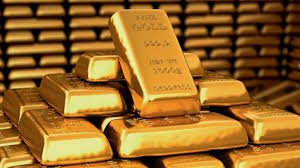Gold prices soared to a historic high on Monday, reaching Rs 71,080 for 10 grams in India. This surge was attributed to various factors including a weakening dollar, increased speculative buying, and escalating geopolitical tensions in the Middle East.
Senior analyst Jigar Trivedi from Reliance Securities highlighted several drivers behind this surge, including the weakening dollar, heightened gold accumulation by central banks, upcoming US elections, and geopolitical tensions in regions such as the Middle East and the ongoing Russia-Ukraine crisis. Trivedi predicted that yellow metal prices could potentially climb to Rs 76,000 per 10 grams by the end of December this year.
Trivedi emphasized that the uncertainty surrounding the Federal Reserve’s policies is enhancing gold’s attractiveness to investors, making it a more cost-effective option compared to other investments.
Reason for the hike in yellow metal prices
 Gold, traditionally regarded as a safe-haven asset during periods of uncertainty, has witnessed a surge in demand as a hedge against inflation, according to analysts.
Gold, traditionally regarded as a safe-haven asset during periods of uncertainty, has witnessed a surge in demand as a hedge against inflation, according to analysts.
Geopolitical tensions, including conflicts in Ukraine and the Middle East, have prompted some traders to seek refuge in yellow metal, contributing to its recent price increases.
Additionally, several central banks have been bolstering their gold reserves. China’s central bank, for instance, continued its trend of purchasing gold for its reserves, marking the 17th consecutive month of such acquisitions in March.
Experts’ response to the price hike
Experts anticipate that gold prices will continue to rise but may experience a correction in the near future.
Ajay Kedia, Director of Kedia Advisory, predicts that gold prices could reach Rs 73,000 per 10 grams around the Diwali festival this year, with silver potentially touching Rs 95,000 per kilogram.
Kedia pointed out that the market has experienced a rapid rally over the past 40 days, leading to an overbought situation from a technical perspective. Consequently, traders are hesitant to enter long positions at current levels for gold.
While Kedia maintains a long-term bullish outlook on gold, he anticipates a corrective pullback in prices. He suggests that a pullback of $50 to $60 cannot be ruled out, translating to approximately Rs 68,000 in the domestic market.
Regarding silver, Kedia suggests that it presents a promising investment opportunity, particularly with increasing industrial consumption. He suggests that silver remains attractive, especially for those who may have missed out on the recent gold rally.
 Gold rose by Rs 1500 to Rs. 71,000 and silver rose by Rs. 2000 to Rs. 81,200. This is to the occasion of Gudi Padwa and Ugadi, an auspicious Hindu festival. Demand for gold in India was weak last week due to a sharp increase in domestic prices, discouraging buyers. Meanwhile, premiums remained steady in China, the leading consumer of the precious metal. Silver prices rose by 1.4% to $27.85 per ounce, while platinum saw a slight increase of 0.1% to $928.11 and palladium gained 0.4% to $1,006.88.
Gold rose by Rs 1500 to Rs. 71,000 and silver rose by Rs. 2000 to Rs. 81,200. This is to the occasion of Gudi Padwa and Ugadi, an auspicious Hindu festival. Demand for gold in India was weak last week due to a sharp increase in domestic prices, discouraging buyers. Meanwhile, premiums remained steady in China, the leading consumer of the precious metal. Silver prices rose by 1.4% to $27.85 per ounce, while platinum saw a slight increase of 0.1% to $928.11 and palladium gained 0.4% to $1,006.88.
What does the global hike in Gold mean?
The hike in gold prices can have both positive and negative consequences for India, the world’s second-largest consumer of gold. Here’s a breakdown of the effects:
Potential Positive Impacts:
- Increased import duty revenue: The Indian government levies a customs duty on gold imports. A higher gold price translates to a higher import duty collected, potentially boosting government revenue.
- Hedge against inflation: Gold is often seen as a hedge against inflation, meaning its price tends to rise when the value of the rupee weakens. This can be beneficial for Indian investors seeking to preserve the value of their assets during inflationary periods.
- Potential boost to domestic gold mining: If international gold prices remain high for a sustained period, it could incentivize increased investment in domestic gold mining exploration and production in India.
Potential Negative Impacts:
- Higher trade deficit: India imports a significant amount of gold. A price increase can widen the trade deficit, putting pressure on the rupee’s exchange rate.
- Increased burden on consumers: Higher gold prices can make it more expensive for Indian consumers to purchase gold for jewelry, investment, or other purposes. This can dampen demand and potentially hurt businesses in the gold industry.
- Fueling smuggling: High import duties can incentivize gold smuggling, leading to loss of revenue for the government and unfair competition for legitimate businesses.
Additional Considerations:
- Strength of the Indian rupee: The impact of the gold price hike depends on the exchange rate between the rupee and the US dollar (gold is priced internationally in USD). A weaker rupee can exacerbate the negative effects of a gold price increase.
- Government policies: The Indian government can influence the gold market through various policies, such as adjusting import duties or promoting domestic gold production. These policies can mitigate some of the negative impacts.










